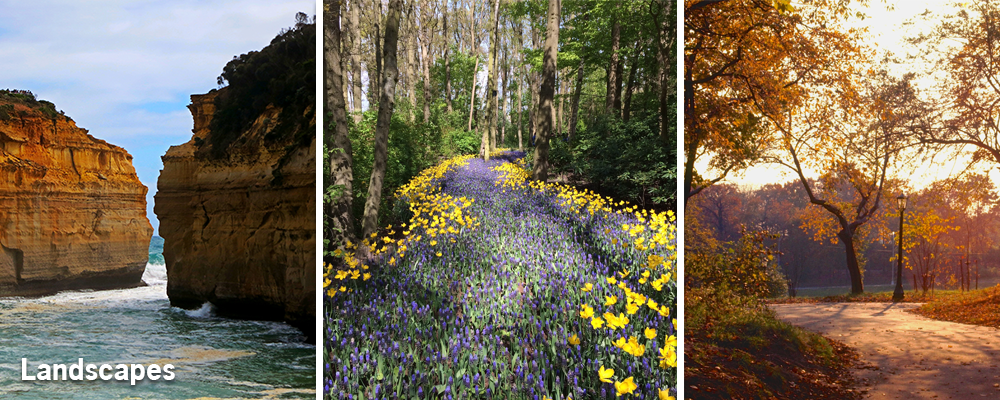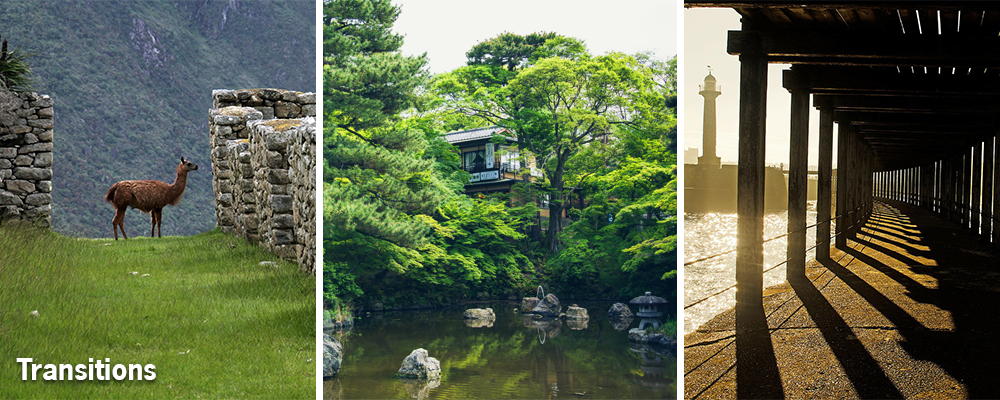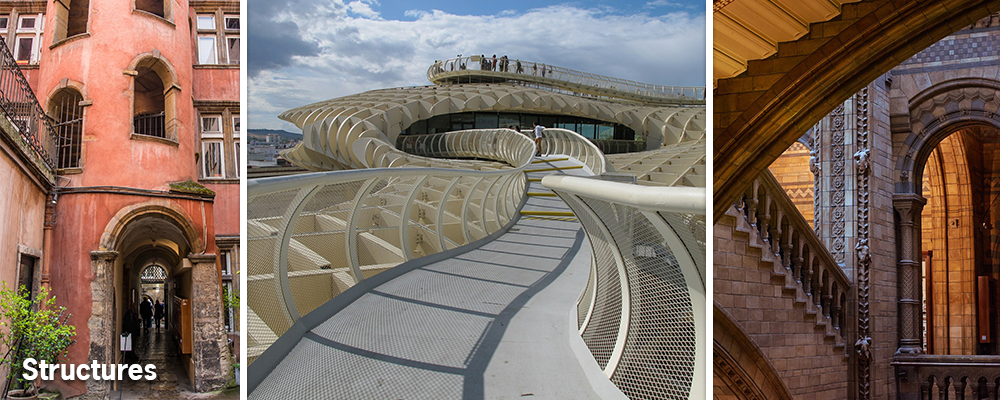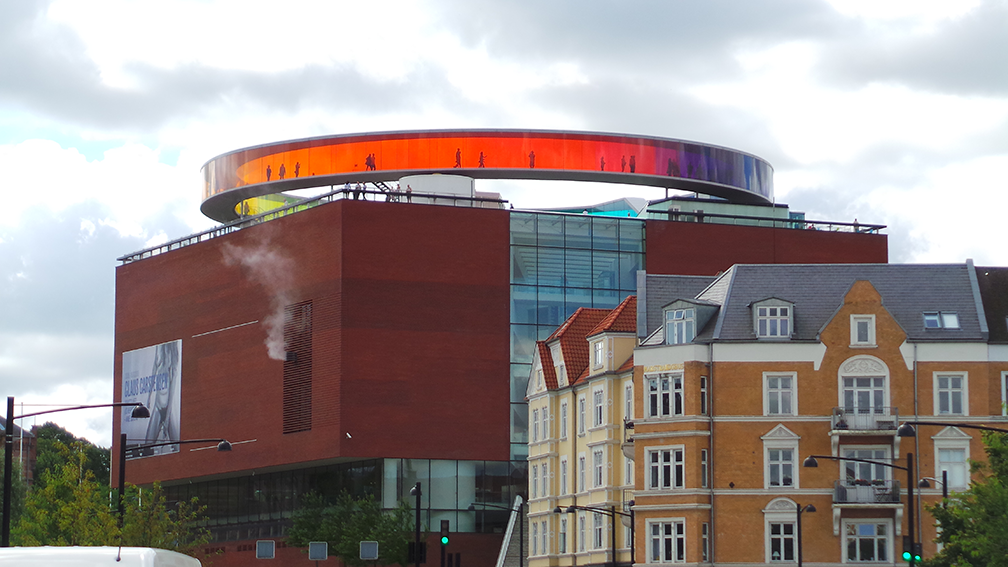
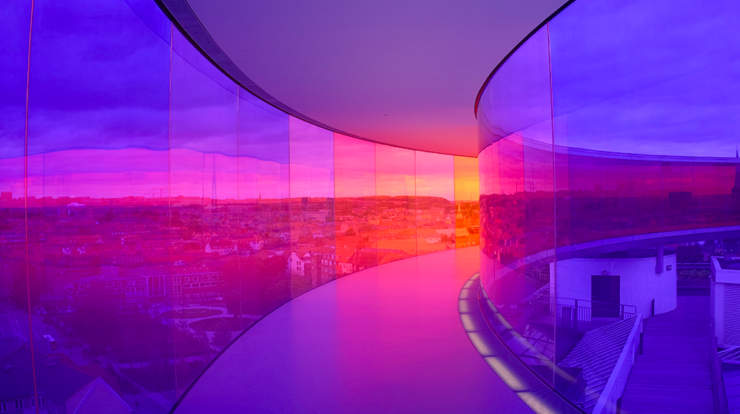
Features
Mystery: More Than Meets the Eye
Catie Ryan
Share
Contributing author: Allison Bernett
Learn more about our biophilic design work and services by emailing us at [email protected] and reading our reports, 14 Patterns of Biophilic Design and The Economics of Biophilia. Follow the conversation on twitter: @TerrapinBG | #14Patterns.
*This feature is a modified re-post from Catie’s on-going series for Human Spaces, powered by Interface, outlining each of the 14 patterns of biophilic design. For a more in-depth look at this pattern and others, see the publication “14 Patterns of Biophilic Design.”
Introduction
If you are an avid hiker, you know the excitement you feel when catching a glimpse of a sunlit meadow through a dark forest, spotting a sliver of a grand vista just around the bend in the trail, or hearing the sound of a waterfall just out of sight. These tantalizing hints of something pleasant ahead compel you to explore further, to walk those last few steps before setting your pack down. This feeling of excitement is exactly what the biophilic pattern of “Mystery” replicates in our built environment.
Mystery is part of the “Nature of the Space” category of biophilic patterns. Instead of bringing elements of nature directly into the space (Nature in the Space), or mimicking natural patterns, materials and forms (Natural Analogues), Nature of the Space patterns replicate enjoyable or exciting spatial conditions found in nature.
The Mystery pattern is defined as the promise of more information achieved through partially obscured views or other sensory devices that entice the individual to travel deeper into the environment. A space with a good Mystery condition has a palpable sense of anticipation, or of being teased, offering the senses a kind of denial and reward that compels one to further investigate the space. Importantly, a Mystery condition does not feel like a “don’t-open-that-door horror movie moment” (i.e., surprising, unpleasant, dangerous). Rather, it slowly reveals a new condition, feature, or information.
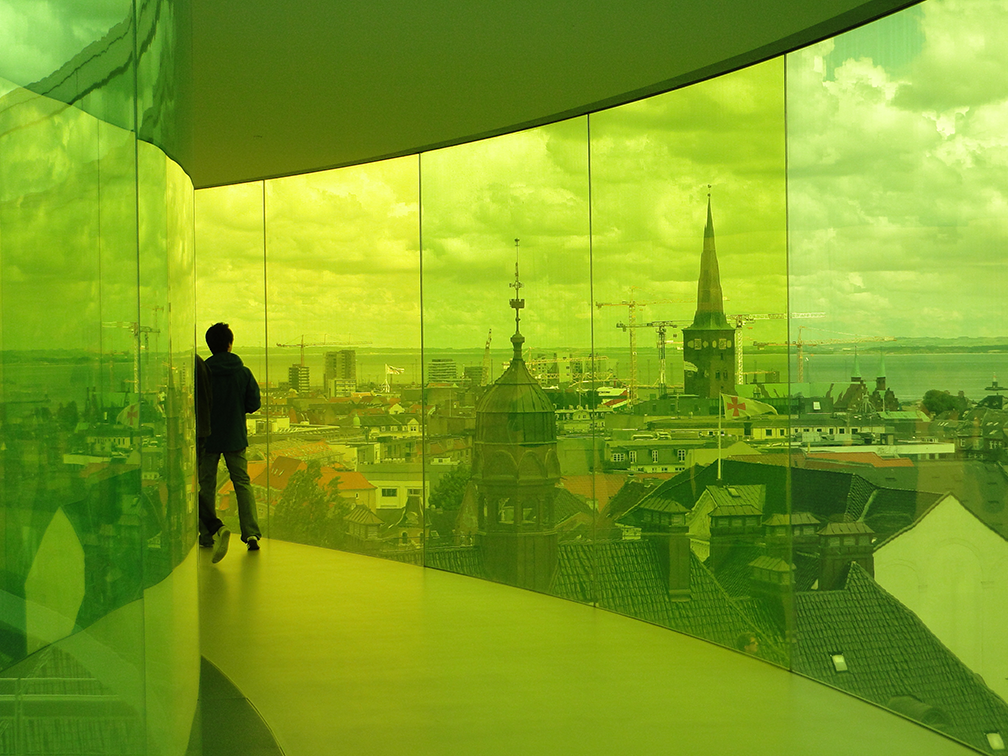
Image copyright Harkolufs/Wikimedia Commons.
Origins
Mystery like many of the biophilic patterns, is not an alien concept to designers. Particularly in landscape architecture, the “denial-reward approach” technique has been used in many a beloved park, garden, and building entrance. Famous examples include the gardens at the Katsura Imperial Villa in Kyoto, Japan, and Frederick Law Olmsted’s Prospect Park in Brooklyn, New York. Both examples employ curving pathways, rolling hills, and trees to partially obscure buildings or vistas that lay beyond, encouraging visitors to explore the landscape.
Mystery has also been a topic of interest to environmental psychologists, where Mystery has been typically represented by diagrams of facades obscured by trees, views through a forest, or partially obscured landscape features. Researchers have found that Mystery conditions engender a strong pleasure response within the brain that may be a similar mechanism to that of anticipation—which is hypothesized to be an explanation for why listening to music is so pleasurable—in that we are guessing what may be around the corner. The benefits of mystery conditions are suggested to include improved preference for a space, heightened curiosity, increased interest in gaining more information, and greater likelihood of encountering other biophilic conditions.
Mystery has also been strongly linked to environmental preference. Stephen and Rachel Kaplan theorized that Mystery, along with Coherence, Legibility, and Complexity, are the four factors that determine our preference for certain views. Coherence is brought about by any features that organize and provide immediate information about the scene. Legibility refers to features that contextualize the scene, perhaps through wayfinding or by helping the viewer build a cognitive map. Complexity, much like it sounds, is brought about by intricate or visually rich scenes. All together, they help explain why certain views are so innately compelling.
Applying Mystery to architecture and interior spaces
Although much of the research and practice of using Mystery in design is centered around landscapes, its universal attributes can be translated into architecture and interior design. So what makes a space “mysterious”? Spatial qualities and planning strategies that reveal more information as users explore the space are particularly good at creating a Mystery condition. Designers can use curving hallways, partially obscured artwork, partially obscured or muffled movement and sound (e.g., music or nature sounds), variable transparencies or peek-a-boo windows, and light and shadow.
Mystery is unique among the Nature of the Space patterns because the onus is on the designer to conceive of how a person might experience a progression of spaces rather than the experience staged from one single point or place. People need to move in order to experience Mystery. So designers must consider how users might approach a significant object, what sensory experiences will entice them to enter a space, and what spatial characteristics will encourage them to continue down a path or hallway.
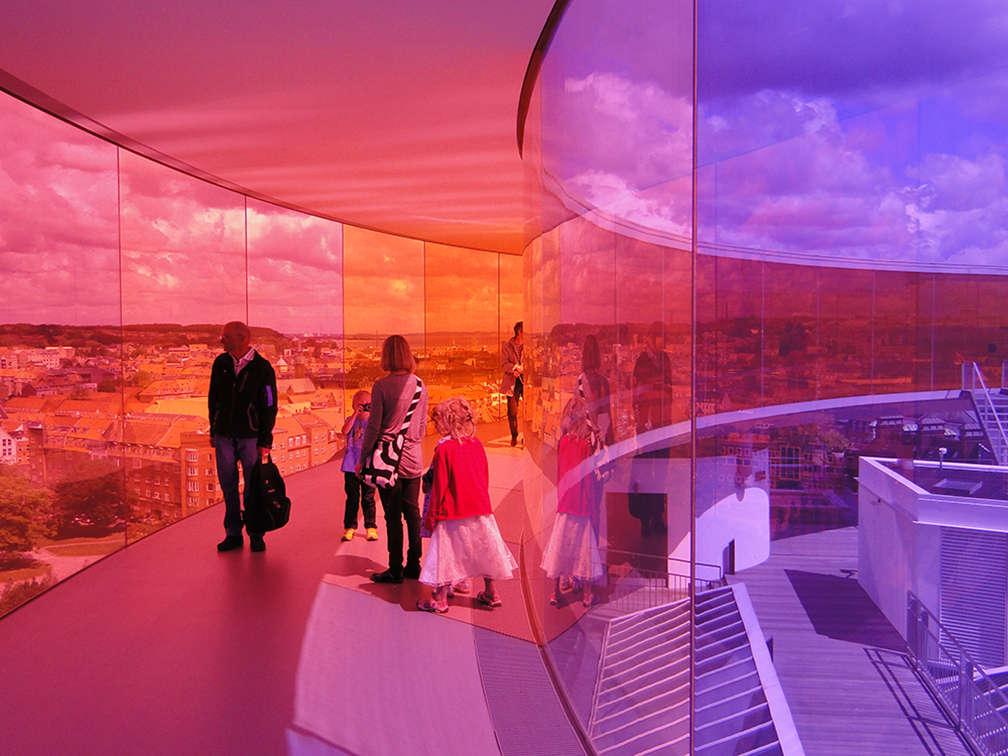
Image copyright Harkolufs/Wikimedia Commons.
Spaces with regularly returning occupants (rather than infrequent visitors) such as workplaces, residences or schools have the challenge of habituation: Mystery has diminishing returns. If you know the artwork that sits at the end of the hallway because you walk that hallway everyday, you’re less likely to be intrigued by the mystery condition. In spaces, interventions that are unpredictable or that exhibit naturally or mechanically induced changes over time may work best. For example, changes in light and shadow, sound sourcing, information content, and activity over time, whether throughout a day or over years, can keep occupants engaged and curious. In other words, having the same unchanged art installation at the end of the hall for months will not likely engender the same response among a returning population as it did in the first week.
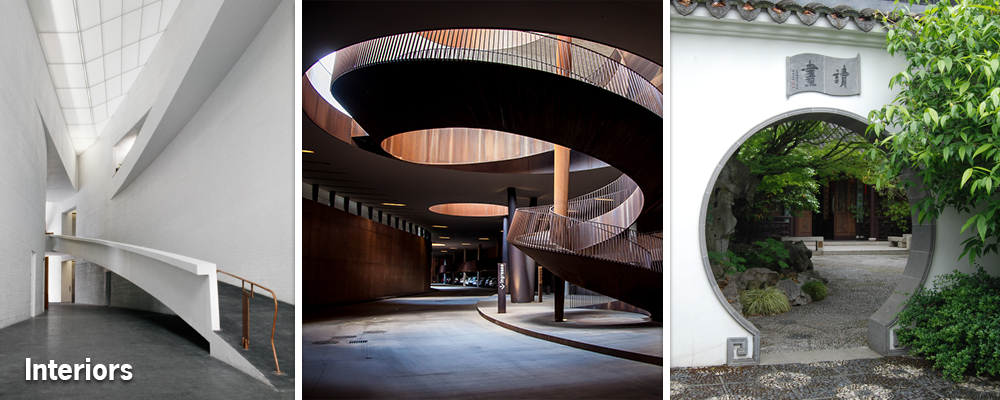
Left image copyright Museum of Contemporary Art Kiasma/Flickr, middle image copyright Tom Godber/Flickr, right image courtesy of Bill Browning.
Terrapin’s workplace has a simple but effective example of mystery. We are situated in a large co-working floor for 900 people. Our office is on the periphery of the expansive floor, with a large shared kitchen at the center of the floorplate and maze of small offices and hallways in between, making it easy to forget how many people share the space. The kitchen is average, with poor lighting, low ceilings, awkward seating, and no notable views. However, it is a good space for hosting large events, which occur frequently, and the rambunctious activities can be heard all the way from our office. We find we are unwittingly drawn to the space, compelled to seek out the source of the socializing. The kitchen becomes a destination simply because of the resonating acoustics, the approach through winding hallways, and the ever-changing programming.
Avoiding “horror movie” moments
Many people might find a door with a “do not enter” sign enticing and perhaps mysterious. However, that’s not the condition we’re trying to create with Mystery because there is no hint of what lies beyond the door. Any feature that surprises, is fear-inducing or perceived as risky is not preferred. In interior spaces, these can be items such as sharp corner, acoustics that completely deaden sound, closed doors, or completely obscured objects until you happen upon them (surprise). Conversely, objects that are fully exposed loose all sense of enticement. Always reveal a little information, but not too much!
Another tool in the biophilia toolkit
Whether you’re hiking outdoors, strolling through gardens, or listening to sounds of a good party inside, Mystery makes for an exciting experience. Verified by research, Mystery evokes a strong pleasure response that designers have used intuitively for centuries to create enticing conditions. Since Mystery relies on a progression of spaces or conditions, it can be strategically implemented to enhance other biophilic patterns through tantalizing approaches or by drawing them to a desired intervention. With a little creativity in its use, Mystery can be a powerful mechanism for improving occupant experience.
The Rainbow Panorama (above) by Olafur Eliasson Studio is a rooftop installation for the ARoS Aarhus Art Museum (Kunstmuseum) in Denmark. As visitors walk around the enclosed circular hallway, the exterior colored glass transitions from blue to red to yellow, enticing them to walk the entire length of the circle and experience the view with different perspectives. We hope you were “enticed” by the slowly revealing images of this installation as you scrolled through this post.
*Both the header and feature images are creative commons zero (CC0).
References:
-
Biederman, I. & E. Vessel (2006). Perceptual Pleasure & the Brain. American Scientist, 94(1), 249-255.
-
Blood, A., & R.J. Zatorre (2001). Intensely Pleasurable Responses to Music Correlate with Activity in Brain Regions. Proceedings from the National Academy of Sciences, 98 (20), 11818-11823.
-
Ikemi, M. (2005). The Effects of Mystery on Preference for Residential Façades. Journal of Environmental Psychology, 25, 167–173.
-
Herzog, T.R. & A.G. Bryce (2007). Mystery and Preference in Within-Forest Settings. Environment and Behavior, 39 (6), 779-796. 97
-
Herzog, T.R. & L.S. Kropscott (2004). Legibility, Mystery, and Visual Access as Predictors of Preference and Perceived Danger in Forest Settings without Pathways. Environment and Behavior, 36, 659-677.
-
Nasar, J.L. & B. Fisher (1993). ‘Hot Spots’ of Fear and Crime: A Multi-Method Investigation. Journal of Environmental Psychology, 13, 187-206.
-
Salimpoor, V.N., M. Benovoy, K. Larcher, A. Dagher, & R. J. Zatorre (2011). Anatomically Distinct Dopamine Release During Anticipation and Experience of Peak Emotion to Music. Nature Neuroscience, 14 (2), 257-264.
Catie Ryan
Catie is the Director of Projects at Terrapin and a leader in biophilic design movement. With a background in urban green infrastructure, Catie's interest lies in systems thinking to address human health and sustainability challenges at each scale of the built environment.
Topics
- Environmental Values
- Speaking
- LEED
- Terrapin Team
- Phoebe
- Community Development
- Greenbuild
- Technology
- Biophilic Design Interactive
- Catie Ryan
- Spanish
- Hebrew
- French
- Portuguese
- Publications
- Occupant Comfort
- Materials Science
- Conference
- Psychoacoustics
- Education
- Workshop
- Mass Timber
- Transit
- Carbon Strategy
- connection with natural materials
- interior design
- inspirational hero
- biophilia
- economics of biophilia
- Sustainability
- wood
- case studies
- Systems Integration
- Biophilic Design
- Commercial
- Net Zero
- Resorts & Hospitality
- Energy Utilization
- Water Management
- Corporations and Institutions
- Institutional
- Ecosystem Science
- Green Guidelines
- Profitability
- Climate Resiliency
- Health & Wellbeing
- Indoor Environmental Quality
- Building Performance
- Bioinspired Innovation
- Biodiversity
- Residential
- Master Planning
- Architects and Designers
- Developers and Building Owners
- Governments and NGOs
- Urban Design
- Product Development
- Original Research
- Manufacturing
- Industrial Ecology
- Resource Management
- Sustainability Plans
- Health Care
- Carbon Neutrality

